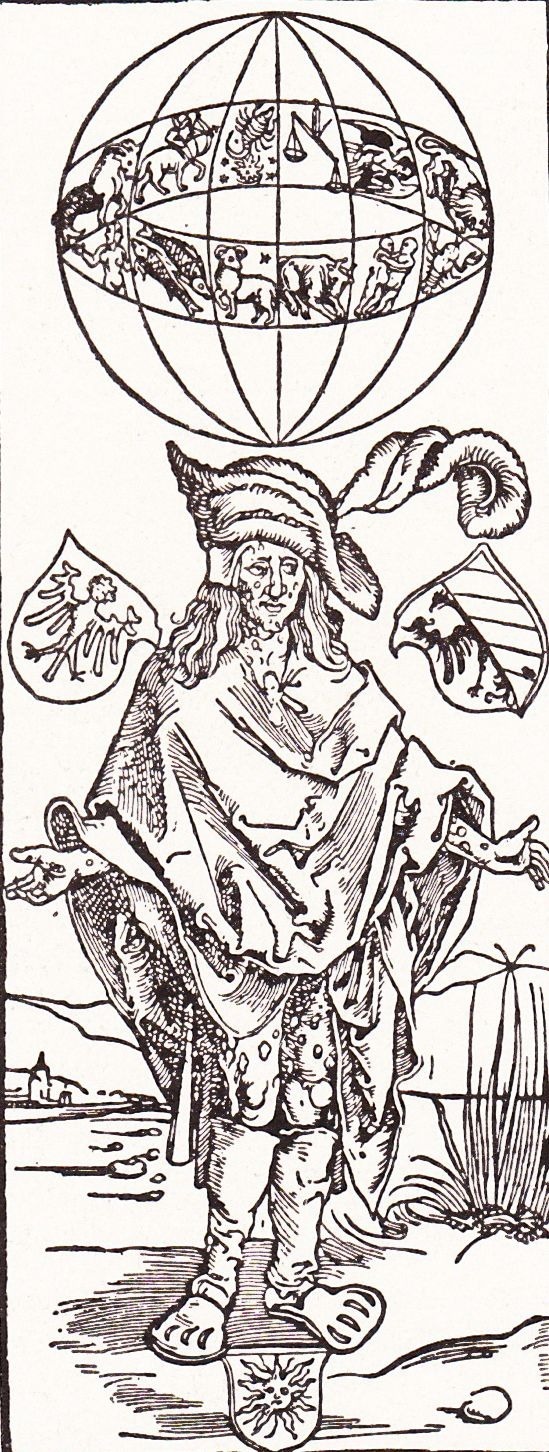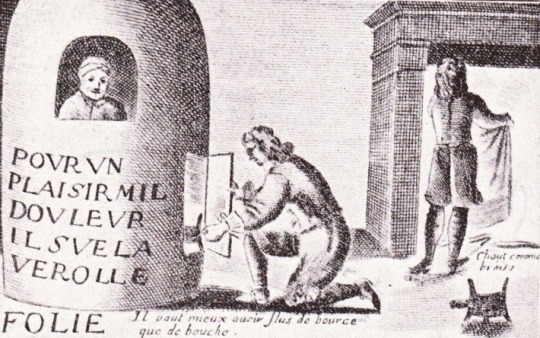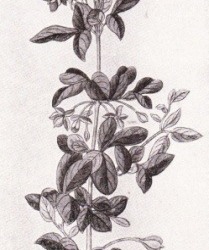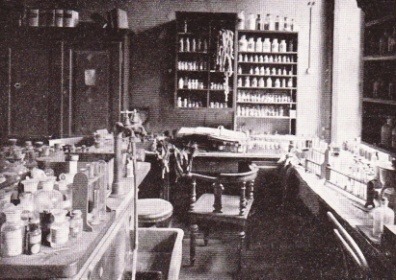#rui anjou
Photo

Rui Anjou (Magic-Kyun! Renaissance)
» August 15
18 notes
·
View notes
Photo



Jsuki; Magic-kyun Renaissance (Anime) Intro Theme: Magic-kyun! No.1
Got into the Anime, and subsequently the series, so I also bought the theme song on a whim when I was at Animega in Tenjin, Fukuoka. I wonder how many otome gamers have watched this? (Didn't seem like there was much hype, although I genuinely found the development interesting.)
I also bought the game, but tbh the on-screen action was much better xD (Will talk more about the game soon~ but with my new PS4, I've been spending way less time on my PSV T_T)
Anw, the seiyuus for this series are pretty good too! KENN, Aoi Shota, Ono Yuki etc. Despite the fact that Umehara Yuichiro's voice is only so-so for a character that supposedly has god-like singing chops, I'll forgive him. Songs were also plesant! For some reason, I generally like all the songs that I've heard so far from Magic-kyun???
This CD also comes with 1 out of 3 random character cards (I got Suminomiya). If you buy the ED theme song single, the other 3 characters are there.
You can now order your copy of this HERE.
#magic kyun renaissance#magic kyun#ichijouji teika#suminomiya aoi#tatewaki rintarou#rui anjou#tsukushi monet#hibiki kanato#magic kyun no.1#single#OP
8 notes
·
View notes
Photo





#magic-kyun renaissance#Magic-Kyun! Renaissance#maji-kyun! renaissance#マジきゅんっ!ルネッサンス#kohana aigasaki#aoi suminomiya#rui anjou
42 notes
·
View notes
Text
2021 Anime Review!
The year is soon coming to a close, and one of the highlights of 2021 for me was my introduction to the world of anime. Believe it or not, but I had never watched much anime before last summer. I definitely regret not starting sooner now!
Over the past few months, I have done some reviews of the anime I've watched, as well as tierlists of the characters. You can find them on my profile without issue. Furthermore, I've also been working "in the shadows" on three other tierlists which I want to share with you.
Before that, however, let's go over some "awards" for the anime I've watched in 2021.
First anime of the year: Another
A great introduction to anime with a nice and mysterious plot!
Last anime of the year: Violet Evergarden
A beautiful story with a wonderful protagonist and stunning art.
Best anime watched this year: Your Lie In April
My heart is still recovering from the sadness of this anime. I doubt I'll find another anime just like this one... and I'm not even sure I want to.
Worst anime watched this year: Your Name
I'm probably going to get hate for this, but I didn't like this movie very much. I know it's loved, but I found it confusing and not really interesting.
Anime I'm most excited to see the next season of: Demon Slayer
Season one was great, and don't get me started on the movie. I'm just waiting for the English dub of season two - so no spoilers, please!
Most emotional anime watched this year: A Silent Voice
Not to mention YLIA again. A beautiful story with some lessons you can draw from it.
Funniest anime watched this year: Toradora! or Love, Chunibyo & Other Delusions
Both were tons of fun to watch. Toradora! is on the realistic side, while Love, Chunibyo & Other Delusions is just a crack anime.
The character who doesn't get enough love: Naruko Anjou (Anohana)
Give my girl Anaru some love! She's so sweet and I love her!
The character I would like to punch: Rui (Demon Slayer)
What a little piece of sh*t.
Alright, so with this out of the way, here are my tierlists for 2021. The first one is a tierlist of the different openings I got to hear this year!

Not much to say about this one except that I go to school every day listening to Hikaru Nara, Nanairo Symphony, Pre-Parade, and Aoi Shiori.
Next up is the tierlist for the main characters! Please note that characters in bold writing are the most important characters of their respective anime (protagonist, antagonist...). One of them isn't in bold writing to avoid spoilers. Characters in gray come from anime that aren't complete yet.

Everyone above A is amazing. The S+++ duo will probably remain alone for a while. I don't think any of my opinions will be controversial here?
Finally, here is the tierlist for the anime themselves. After all, this is what matters most, right? It took me a lot of thought, but I'm satisfied with it.

As you can see, I haven't watched anything terrible this year. There's a bit of a step between YLIA and the Demon Slayer movie, but not enough for a tier to separate them. This tierlist might be a little more controversial, even if I think many of you would still agree.
I'm really satisfied with everything I've watched this year. I have a long list of anime to watch in 2022 - so long in fact that I don't think it'll fit! This year has set the bar very high, but I wouldn't have it any other way, to be honest with you. I've had a ton of fun, I've cried a lot, and it was great.
Be sure to tell me what you think of my rankings!
#another#bloom into you#your lie in april#toradora#your name#love chunibyo and other delusions#anohana#rent a girlfriend#the devil is a part timer#the promised neverland#a silent voice#death parade#kakegurui#erased#demon slayer#the day i became a god#violet evergarden#anime#tierlist
7 notes
·
View notes
Note
Hi Ruri!!!!! :D
Sorry I just saw the Oc asks!
Would these be ok?

Hugs!!!!!!!!! Hope you're having an incredible day!!!💗💗💗💗💗💗💗💗💗

HWJEJDJ SORRY I REPLIED SO LATE AAA😭😭😭🤍🤍🤍
Hope you're havin an amazing day my dude😤🤍

Im gonna do It for the ones that I didn't do w em
(n also choosin the most interesting ones for em tbh)
Kayn
💍- He does actually, he's got plenty of em. The saddest one would be somethin like Vera's chocholate (that for context, she was basically a lil child where he used to live that asked him to participate to an event there, and things didn't end well in the end, so... yeah. She died in the end, n he still ain't over it), other than that he probably keeps some pieces from anyone of the gang, like somethin to represent em, that would be either a plushie he recieved for em or just one he already has that still does the job. N honestly, also letters from em or just, gifs he received, he'd be collectin all of em, like they were treasures. Oh and, last things, lil doodles he made of every of his friends.
✨- Ohhh, kinda tricky. Id think either love or their other forms, but I think hearth would also go well w him tbh. I feel like If he'd be worshipped he rly wouldn't do anything for It, in the sense that he ain't gonna be too demanding, but would be self concious n still be a lil strict, but he wouldn't be an asshole ofc.
📓- (hwjdk I'm not good w em so sorry if there's mistakes 😭)
"Dear diary,
Ceasar got mad at me again ;-; I told him that I wanted to keep them but told me i should let them go, I already miss my kitty kittens :'(
I got an hot chocholate though! I didn't get to rest too much today, I don't know why, but now it's really better! I also got to pet a cute doggo today before leaving :3
Anjou asked Soup to talk, I'm really worried :( He's trying his best! I'll try to prepare some tea for him!
With that said, I'm going to check up on Luci, I'll write soon!
Much love ♡."
(hwje soup Is ruri but like as a lil nickname cuz he accidentaly called kayn a soup in italian, so now it's a lil meme between em)
Rui
🙏- well. They don't anymore so that's mainly It🤡 (sorry for bein short but they really don't want anything w religion anymore😭)
🎁- Crystals, mainly so, or just shining things in general. They actually really like any kind of gifts, so there's not much of a difference, but they do have a preference for em! But the worst you could give Rui would be somethin resemblin any kind of things that would give em bad memories or feelings, but they don't affect them really of the person meant well w it. But, i feel like Rui's more of the one reciving gifts, not because he doesn't like to give but cuz they don't really know what the other person really wants, so they'd really struggle n if asked would give em a cute lil rock/crystal, they're trying aight.
(The emoji w the fate thingy cuz I can't find It rn-
They do, or at least kind of. They still think of some things to be rather garbage or not good to rely on, but would still get fascinated by some of em. Rui wouldn't really take anythin from granted to begin w, n for em stuff could be scripted by fate like they couldn't, there's no way for them to really set in stone what they want to belive in.
8 notes
·
View notes
Photo

Hey everyone! Are we ready for Reverse Harem Week 2017 (March 9th to March 15th)??? \(≧▽≦)/
We’re all celebrating our love for the genre! Everybody is invited to participate! We’re accepting all creations such as, but not limited to: gifsets, fanfictions, fanarts, graphics, photosets, amvs, playlists, etc. Anything you can think of. Creativity is key!
Prompts || Rules || FAQ
#reverseharemweek2017#reverse harem#fandom weeks#magic-kyun! renaissance#aigasaki kohana#anjou rui#hibiki kanato#ichijouji teika#suminomiya aoi#tatewaki rintarou#tsukushi mone#promo post#admin edits
15 notes
·
View notes
Photo






Magic Kyun! Renaissance CG Part 1 + Ending │Anjou Louis
184 notes
·
View notes
Text
M. Tampa et al., Brief History of Syphilis, 7 J Med Life 4 (2014)
Abstract
Before the discovery of Treponema pallidum as the etiologic agent, the origins of syphilis have been the subject of several debates. Diverse therapeutic agents were employed in an attempt to cure the disease. Examining the milestones in the history of syphilis, the present article reviews the existing theories that tried to explain the origins of the disease, the approach in art, the cultural and the evolution of the treatments from the empiric means to the discovery of penicillin.
Introduction
Syphilis is a sexually transmitted disease caused by Treponema Pallidum, a bacterium classified under Spirochaets phylum, Spirochaetales order, Spirochaetaceae family, but there are at least three more known species causing human treponemal diseases such as Treponema pertenue that causes yaws, Treponema carateum causing pinta and Treponema pallidum endemicum-responsible for bejel or endemic syphilis. The four members of the bacterial family cannot be differentiated with morphological, chemical or immunological methods [1,2]. Of the aforementioned bacteria, syphilis is the sole sexually transmitted treponemal disease, as the other conditions are transmitted via direct contact with an infected individual [3].
From the very beginning, syphilis has been a stigmatized, disgraceful disease; each country whose population was affected by the infection blamed the neighboring (and sometimes enemy) countries for the outbreak. So, the inhabitants of today’s Italy, Germany and United Kingdom named syphilis ‘the French disease’, the French named it ‘the Neapolitan disease’, the Russians assigned the name of ‘Polish disease’, the Polish called it ‘the German disease’, The Danish, the Portuguese and the inhabitants of Northern Africa named it ‘the Spanish/Castilian disease’ and the Turks coined the term ‘Christian disease’. Moreover, in Northern India, the Muslims blamed the Hindu for the outbreak of the affliction. However, the Hindu blamed the Muslims and in the end everyone blamed the Europeans [4-6].
In the 16th century, Jean Fernelius, a Parisian teacher whose work and interests were channeled into the mercury treatment of the condition, coined the term ‘lues venera’ (‘venereal pest’) in his treaty dedicated to the affliction [7]. Therefore, the term ‘syphilis’ was introduced by Girolamo Fracastoro, a poet and medical personality in Verona. His work “Syphilis sive Morbus Gallicus” (1530) encompasses three books and presents a character named Syphilus, who was a shepherd leading the flocks of King Alcihtous, a character from Greek mythology. In Fracastoro’s tale, Syphilus, mad at Apollo for parching the trees and consuming the springs that fed the shepherd’s flocks, vowed not worship Apollo, but his King. Apollo gets offended and curses people with a hydious disease named syphilis, after the shepherd’s name. The affliction spread to the whole population, including King Alcithous. The nymph Ammerice counseled the inhabitants to offer Apollo further sacrifices, one of which was Syphilus himself, and also to sacrifice to Juno and Tellus, the latter offering the people the tree of Guaiac (Guaiacum officinale), a very used therapeutic medicine in times of Fracastoro [6-8].
Hypotheses on the origin of syphilis
The pre-columbian hypothesis. The advocates of this hypothesis claim that not only syphilis was widely spread in both Old and New World, but also the other treponemal diseases. In Europe, most of these conditions were mistaken for leprosy [3]. According to this hypothesis, pinta occurred in Afro-Asian zone by the year 15.000 BC, having an animal reservoir. Yaws appeared as a consequence of the mutations in pinta around 10.000 BC and spread allover the world, except for the American continent which was isolated. The endemic syphilis emerged from jaws by the selection of several treponemas, as a consequence of climate changes (the appearance of the arid climate) around 7000 BC. Around 3000 BC the sexually transmitted syphilis emerged from endemic syphilis in South-Western Asia, due to lower temperatures of the post-glacial era and spread to Europe and the rest of the world. Initially it manifested as a mild disease, eventually aggravated and grew in virulence, suffering from several mutations, at the end of the 15th century [2,3].
The unitarian hypothesis. Considered by some authors as a variant of the pre-Columbian hypothesis, it advocates that the treponemal diseases had always had a global distribution. According to this theory, both syphilis and non-venereal treponemal diseases are variants of the same infections and the clinical differences happen only because of geographic and climate variations and to the degree of cultural development of populations within disparate areas. Briefly, pinta, yaws, endemic syphilis and venereal syphilis are considered as adaptative responses of T. Pallidum to changes in the environment, cultural differences and contact between various populations [3,9]. In this respect, yaws had a starting point in Central and Western Africa, spreading towards the Iberian Peninsula along with the capturing and selling of Africans as slaves, fifty years before Columbus’ voyage. Yaws, endemic in Africa for that time being, would have remained unmodified in countries with similar climate conditions as those in the origin countries, but would have evolved into endemic syphilis in countries with colder and drier climate in which personal hygiene was overlooked and disregarded and into venereal syphilis in those areas where inhabitants exhibited a civilized society and paid more attention to personal hygiene. The advocates of this hypothesis consider as irrelevant the theory according to which the 44 members of Christopher Columbus crew and the 10 indigenes brought along to Europe could be blamed for syphilis spreading in the whole Europe in just a few years [10,11].
The Columbian hypothesis. This very popular hypothesis states that the navigators in Columbus fleet would have brought the affliction on their return form the New World in 1493 [3,12]. This theory is supported by documents belonging to Fernandez de Oviedo and Ruy Diaz de Isla, two physicians with Spanish origins who were present at the moment when Christopher Columbus returned from America. The former, sent by King Ferdinand of Spain in the New World, confirms that the disease he had encountered for the first time in Europe was familiar at that time to the indigenes who had already developed elaborated treatment methods. As for Ruy Diaz de Isla, the physician acknowledges syphilis as an “unknown disease, so far not seen and never described”, that had onset in Barcelona in 1493 and originated in Española Island (Spanish: Isla Española), a part of the Galápagos Islands. Ruy Diaz de Isla is also the one that states in a manuscript that Pinzon de Palos, the pilot of Columbus, and also other members of the crew already suffered from syphilis on their return from the New World [10,12].
Ever since, numerous opposites of the Columbian hypothesis tried to prove the pre-existence of syphilis in the Old World, by finding evidence consisting of specific lesions on skeletal remains dated before Columbus journey in America. Radiocarbon dating along with several other modern means of dating, as well as more careful examining of such remains proved that all skeletal parts with specific luetic lesions dated not before, but after 1492. On the other hand, not all skeletal parts evoked by the opposites of Columbian hypothesis were actually exhibiting syphilis lesions. However, in 16 bone fragments the syphilis diagnosis could be certified and modern dating methods showed pre-Columbian origin. Harper et al. explained in an article published in 2011 that all these skeletons were located in coast areas from Europe, in which sea food represented an important part of the inhabitants’ diet. The sea food contained older carbon from the bottom of the ocean that interferes with carbon dating, therefore, after corrections and adequate adjustments have been made, it could be proven that the skeletons actually could not be dated before Columbus return to Europe, as previously considered [13].
Unlike Europe, the American continent was able to present clear evidences supporting the existence of syphilis in pre-Columbian period. In this respect, skeletal lesions characteristic for the diagnosis of syphilis which has been identified in various areas plead for syphilis existence in these areas before Columbus discovered America. In addition, radiocarbon dating of the bone fragments showed an age of several thousand years [4,14].
Syphilis in Europe
In 1489, Pope Innocent VIII was in conflict with Ferdinand I of Naples because the Italian King refused to pay his debts to him. As such the Pope offered the kingdom of Naples to Charles VIII who was the Affable of France, and to a certain extent was entitled to reign over this territory by his paternal grandmother, Mary of Anjou. In 1494 Ferdinand I died and his successor, Alfonso II announced his pretences to the Duchy of Milan, which was controlled for a long time by Ludovic Sforza. Ludovic Sforza, in order to avert the threat represented by Alfonso II, encouraged Charles the VIII th to accept the proposal made by Pope Innocent VIII and to conquer the kingdom of Naples. At the end of 1494, one year after the return of Columbus from his first expedition to America, Charles VIII entered Italy with an army of 25.000 men, mainly Flammand, Garcon, Swiss, Spanish and even Italian mercenaries. Initially his army entered Rome, where, for one month, it led a life of limitless depravity. In February 1495 the army of Charles VIIIth entered Naples without encountering any resistance, as the Neapolitan army was made out of no more than 1.000 Italian, German and Spanish mercenaries. The French army was well received by the locals hoping for a better life under French occupation, but later on changed their opinion as they witnessed great flourish in thefts, depravity and mess. The increasing power of Charles VIII leads to an alliance made by the Italian princes, including Ludovic Sforza, who defeats Charles VIII in the battle of Fornovo in July 1495. It is during this battle that the Italian physicians described for the first time a disease they have seen on French soldiers’ bodies, manifested as a generalized eruption consisting of pustules, more terrifying than leprosy and elephantiasis and that could be lethal and was transmitted through sexual intercourse. The disease proved to be syphilis, and the French army was soon blamed for spreading the affliction throughout Italy [12,15].
Laura M. Gough, specialist in history of medicine, notes that the war conditions represented a favorable field for the first outbreak of syphilis. It has occurred during Italian invasion by the French armies, in a period of time when all great powers of Europe (France, Spain, the Holy Roman Empire and the Papal States) wanted to gain control over the Apennine Peninsula. As both French and Italian armies were made out of mercenaries brought from the entire Europe, and as the wars lasted for 30 years –a sufficient interval not only for marriages between mercenaries and local females, but also for rape and prostitution-the disease has spread rapidly across Europe as the mercenaries returned to their homeland [15,16].
An important aspect to consider is also that syphilis was, at the very beginning, a disease of great severity, a more rapid spreading and atypical in its evolution as compared to nowadays syphilis, the fatal cases were not rare. The supporters of the Columbian hypothesis advocate that the extreme severity if the condition was mainly due to its novelty, as the population had no time to gain any immunity against the ailment as the venereal syphilis became endemic in Europe, certain strains of T. pallidum have selected, and the disease gained a milder course [17].
The spread of the syphilis across Europe was frequently associated with the invasion of Naples by the French army. However, ever since fewer popular theories have been developed. In 1492 Ferdinand de Aragon and Isabel of Castilla issued the Edict of Expulsion of the Jews, stating that all the individuals of Hebrew origins refusing to convert to Catholicism were to be expulsed from Spain and the rest of its territories. On this occasion, approximately 200.000 Jews have left the country for Northern Africa and Southern Europe. On their way, a part of them temporarily settled at the gates of Rome; they were not allowed in Rome, and in the new Diaspora an outbreak occurred, killing 30000 individuals. Despite all efforts, the disease later identified as syphilis entered the city of Rome. Therefore, some of the chroniclers of the time blamed the Jews for the spread of syphilis in Europe; according to them, the disease was already present on Italian territory before Naples invasion by the French in 1495 [6,12,17,18].
Syphilis in artistic representations
The oldest artistic representation of syphilis is considered one on a Peruvian jug dating back to VIth century, depicting a mother suffering from syphilis holding a child in her arms; the mother shows a saddle nose and superior incisive teeth with notches on their free margins. The piece belongs to a collection of jugs also encompassing two jugs illustrating leprosy and leishmaniasis [19].
Albrecht Dürer, a German artist, depicts in woodcuts, for the first time in Europe, in 1496, the image of a mercenary whose skin bears sores of multiple chancres (Fig. 1). Next to the image lays written a text by physician Theodorus Ulsenius warning on the new disease, also describing its signs and symptoms, mentioning that the illness is not curable and establishing a direct link between the epidemic and the grand astrological conjuction in 1484 [19,20].

Fig. 1. A mercenary whose skin presents multiple chancres, woodcut by Albrecht Dürer, 1496 –published in a Romanian book in 1933 [21]
A work of Sebastian Brandt depicting Saint Mary with the Child dates from the same year, 1496 (Fig. 2); the Holy Child throws light spears to punish or cure the sufferers of syphilis, represented as individuals with multiples ulcers and sores. In another part of the woodcut depiction, King Maximilian I and his Knights are ready to receive the crown as reward for the edict he issued in 1495, stating that the disease was a consequence of blasphemy and sins, punishing the suffers of syphilis for their immoral behavior [15,19,22].

Fig. 2. Saint Mary and the Holy Child punishing the sufferers of syphilis, woodcut, 1496 [21]
Another significant painting belongs to Jacques Laniet, in the XVIIth century, an illustration of a man in a fumigation stove, a fashionable method of treatment at that time (Fig. 3). On the barrel lays written “pur un plaisir, mil douleur” (fr. correspondent of the phrase “For a pleasure, a thousand pains”), a proverb very used in those years. Another verbatim translation of this proverb is “for a night with Venus, a life with Mercury” [23].

Fig. 3. Depiction of a man in a fumigation stove, engraving by Jacques Laniet, Paris, 1659, as published in a Romanian book in 1933 [21]
“The allegory of syphilis”, a work of Luca Giordano depicting Venus and a young man with alopecia and crusted papules on the scalp, as well as collapsed nose bone, and “Warning against syphilis” painted by Johan Sadeler presenting Venus giving birth to a contaminated milk spring from her breasts and a shepherd -allusion to Francasto’s poem on the origins of syphilis [23].
The autoportraits of Gerard de Lairesse (1641-1711), as well as his portrait painted by Rembrandt in the XVIIth century highlight in a clear manner the congenital syphilis sequelae of the Dutch painter, amongst which, frontal bossing and saddle nose [24].
Eduard Munch (1863-1944), an expressionist Norwegian painter presents in “The inheritance” the image of a young mother in tears holding a child with syphilis stigmata in her arms. The painting was initially named “the syphilitic child. According to some critics, Munch was ridiculing in his painting the iconic image of Madonna and the child. Pablo Picasso (1881-1973) was also impressed by this disease. His work “The Wages of Sin” is an allegory of venereal diseases and presents a sailor among prostitutes and a medical student holding a skull, as the symbol of death. This work represents actually a sketch of Les Demoiselles d’Avignon (1907), in which the artist gives up the male characters of the painting and illustrates solely the women who are no longer feminine and beautiful, but unattractive. Some critics believe that this painting points out the artist’s fear of venereal disease [25].
Famous historical figures diagnosed with or strongly suspected of syphilis
The transmittance of sexual diseases has always been associated with promiscuity and vulnerable population groups [14]. However, the rapid spreading proved not to avoid any geographical, racial or social barriers, affecting also great personalities along the history.
The writers were among the most affected category which was more likely, due to the promiscuous and bohemian life, to have the disease. Alphonse Daudet, Thomas Chatterton, Keats, James Boswell, Baudelaire, Heinrich Heine, Dostoievski and Oscar Wild are only a few examples of writers suffering from syphilis. Romanian poet Mihai Eminescu was diagnosed with syphilis too. He died in a mental institution at the age of 39 years [26-28]. Even the philosophers, who were usually considered superior minds, insensitive to women charms, also have suffered for syphilis. The most famous of them were Friedrich Nietzsche (1844-1900) and Arthur Schopehnauer (1788-1860). The last has contracted the disease while still a student, and in time, developed a tendency to misogyny [26].
Famous Casanova is widely and iconically known for his excellent techniques of seduction. However, most of his sexual partners were actually prostitutes, and this may be the reason why he had gonorrhea four times, cancroids for five times, syphilis and genital herpes [26,28].
It is also presumed that famous painters as Eduard Manet, Paul Gauguin, Vincent van Gogh and Goya, as well as composers like Ludwig van Beethoven, Robert Schumann and Franz Schubert suffered for syphilis [26].
Furthermore, the monarchy was not spared of the implacable disease. One example is Tsar Ivan IV Vasilievici (known in history as Ivan the Terrible), Prince of Moscow (1530-1584) who contacted syphilis after the death of his wife. Some authors blame syphilis for his brutal behavior [26,28,29]. King Henry III and Charles V of France, Henry VIII and George IV of England, Paul I of Russia and Maximilian I of Holy Roman Empire are other examples.
Al Capone, the famous gangster who led a crime syndicate in the times of Prohibition in the United States supposedly died of neurosyphilis, as a consequence of aggravation of its manifestation after his imprisonment in Alcatraz [28,29].
The history behind the establishment of the etiology of syphilis
From the very beginning numerous theories on the origin of syphilis existed, most of which linking initially syphilis and leprosy together. According to several fables of the early XVI th century, syphilis was the result of a sexual relation between a Spanish prostitute and a leper. The prostitute also infected the soldiers of Charles VIII. Paracelsus (1493-1541) considered that syphilis was the result of a sexual intercourse between a prostitute suffering from gonorrhea and a French leper. In compliance to other theories of the time, the disease might have been the outcome of the relationship of a prostitute having a uterine abscess with a leper or the result of poisoning the wine with blood coming from a leper [6].
Sexual transmitted diseases were seen as a single disease for many centuries. The differentiation between gonorrhea, cancroids and syphilis as distinct maladies was achieved no earlier than XIXth century. In the beginning of XVIIIth century there were several doctors who treated syphilis and gonorrhea as separate entities. However, in 1767 John Hunter a famous physician of venereal diseases at that time (1728-1793) conducted an experiment consisting of an inoculation of the urethral secretion of a gonorrhea patient in the prepuce of a healthy patient, the last developing syphilis shortly afterwards. Consequently, his experiment proved that syphilis resulted from gonorrhea. What Hunter has missed out was that the patient from whom the urethral secretion was taken had both syphilis and gonorrhea. However his experiment, widely acknowledged in his époque, delayed the differential diagnosis of the two diseases with a few decades [7,30].
In 1831 Ricord has designed a larger study on syphilis and gonorrhoea and succeeded to show that the last occurs only after contact with gonorrohea patients, whilst the former –only after contact with syphilis patients [7].
It was not earlier than 1905 that Schaudinn (1871-1906) and Hoffman (1868 – 1959) have discovered the etiologic agent of syphilis, whom they have named Spirochaeta pallida, on various syhilis lesions, proving its existence in both fresh and Giemsa coloured specimens. It was them who changed the name of the bacterium subsequently to Treponema pallidum [7,29,31].
In 1906 Landsteiner introduced the use of the dark-field microscopy method for the detection of the spirochete of syphilis. In 1910 the German bacteriologist August Wasserman (1866-1925) came with the first serologic test for syphilis and in 1949 Nelson and Mayer have conceived Treponema pallidum immobilization test (TPI), the first specific test for T. pallidum [29,32]. Their discoveries had a very important role in detecting the disease in patients who were suspected of syphilis, as well as in other healthy individuals, and in monitoring syphilis response to treatment.
Syphilis treatments along the history
Initially, the treatment of syphilis included less efficient methods that were accompanied by pain and multiple adverse reactions [29]. Taking into consideration that the disease was associated with the discovery of the American continent, numerous treatments included plants brought from the New World, such as the guaiac tree (lat. Guaiacum Officinale), known also as sasafras or willow (Salix), which led to the widest recognition at the time (Fig. 4). These plants acted as purgative agents, lead to sudoration, diarrhea and the increase in urinary debt and were believed to be “blood cleansers” [7]. One of the main supporters of the guaiac tree utilisation in the treatment of syphilis, and in the same time an ardupus opponent of mercury treatment, was Ulrich von Hutten (1488-1523), a former priest who described in a detail the manifestations of the disease as well the simptoms of mercury intoxication, based on his own experience as a sufferrer from the disease [15,33]. From the guaiac tree a decoction was made, the resulted potion was boiled and the patient was assumed to consume the mixture daily for 30 days. Before drinking the potion, the patient was covered in blankets in order to induce perspiration, and a mild purgative was also administered [15].

Fig. 4. Guaiacum officinale (guaiac tree), used widely for the treatment of syphilis [21]
Paracelus (1493-1541) was one of the first supporters of the mercury treatment. Mercury was used in Arabic medicine in the treatment of several dermatomes as well as leprosy, and succeeded to gain rapidly an important place in medical field at that time. Mercury is a potent diuretic that also leads to excessive salivation when administered in toxic doses. At the time, is was considered that the “virus” was eliminated from the body through sweat, salivation and diuresis [15,33,34]. There were several methods of administering mercury. Thus, in a mixture with grease, mercury was administered topically, leading to ulcerations. Barbarossa pill, named after the Turk admiral who gave the pill to his soldiers and was affected by the malady, contained a mixture of mercury and perfume essence and fruit flavours [7]. Mercurous chloride (calomel, Hg2Cl2) was a white salt able to be administered orally, topically or by injections. The metallic form of mercury was administered also under the form of therapeutic fumigation. Patients seemed to find the adverse reactions of the treatment acceptable, however, the treatment lead to systemic intoxication (hidrargirism) and pneumonia [33].
Bismuth salts were introduced in syphilis treatments in 1884. These compounds were less toxic than mercury, in the same time bearing a stronger bactericidal effect that the former, consequently, becoming the cardinal heavy metal employed in syphilis treatment [33].
German scientist Paul Ehrlich (1854-1915) received Nobel Prize in Physiology and Medicine in 1908 for his discovery of arsphenamine (Salvarsan). The scientist discovered the compound that acted like an antibiotic by accident, while working on finding a cure for Trypanosoma brucei. Ehrlich’s desire was to discover a “magical bullet”- a drug able to specifically bind to a bacterium and kill it, without affecting human cells. Salvarsan was also denominated as “Compound 606”, as it was discovered after 606 failed experiments (Fig. 5) [7,35,36]. The safer novel drug that superseded the more toxic and less water-soluble salvarsan as a treatment for syphilis was Neosalvarsan, also an arsenic compound. Both Salvarsand and Neosalvarsan were replaced in the treatment of syphilis by Penicillin, after 1940.

Fig. 5. The laboratory in which famous 606 compound was invented [21]
Observing that fever lead to symptomatic improvement of neurosyphilis, various methods of fever induction have been experimented with turpentine, tuberculine, mercury and even Salmonella typhi. In 1917, the Austrian physician Julis Wagner-Jauregg (1857-1940) includes malaria in the treatment of syphilis. Malaria induced fever paroxysms able to be controlled, as quinine had already been discovered. Jauregg injected patients suffering from malaria with blood presenting Plasmodium vivax. The patients exhibited fever paroxysms lasting for approximately 6 hours and core temperature returning to normal values; quinine was injected after 3-4 cycles on a 2 day period, in order to treat malaria. In 1927 Jauregg received Nobel Prize for Physiology and Medicine for his discovery [29,37].
In 1928, Alexander Fleming (1881-1955) discovered penicilin and from 1943, it became the main treatment of syphilis [7,29]. Nowadays, worldwide, prevention and treatment programs control syphilis spreading.
Conclusions
Treponema pallidum infection in men not only provoked a disease that represented a threat to humans for many centuries, but it also had a tumultuous history. From examining it, one could learn how easy was to place stigma not only on individuals affected by the disease, but on entire nations, as countries were blamed along the history for the spread of the disease. Throughout the centuries, syphilis has affected individuals of various origins, from monarchs, painters and philosophers to low income people, mainly due to promiscuity. Various treatments to cure the disease were tried along the centuries; nowadays, penicillin and prevention programs control the disease.
References
Hackett CJ. On the origin og the human treponematoses (pinta, yaws, endemis syphilis and venereal syphilis). Bull World Health Organ. 1963;29:7–41.
Forsea D, Popescu R, Popescu CM, compilers. In: Compendiu de dermatologie si venerologie/ Dermatology and Venerology Compendium. Ed. Tehnica; 1996.
De Melo FL, De Mello JCM, Fraga AM. Syphilis at the Crossroad of Phylogenetics and Paleopathology. PLoS Negl Trop Dis. 2010;4:575.
Rothschild BM. History of Syphilis. Clinical Infectious Diseases. 2005;40:1454–1463.
Fee E. The wages of sin. The Lancet. 1999;354:SIV61.
Foa A, compiler. In: The new and the old: the spread of syphilis (1494–1530) Baltimore: Johns Hopkins University Press; 1990. pp. 26–45.
Forrai J, compiler. In: History of Different Therapeutics of Venereal Disease Before the Discovery of Penicillin,Syphilis - Recognition, Description and Diagnosis. Dr. Neuza Satomi Sato; 2011.
Waugn MA. Role played by Italy in the history of syphilis. Br J Vener Dis. 1982;58:92–95.
Singh AE, Romanowski B. Syphilis: review with emphasis on clinical, epidemiologic, and some biologic features. Clin Microbiol Rev. 1999;12:187–209.
Morton RS. Another look at the Morbus Gallicus. Postscript to the meeting of the Medical Society for the Study of Venereal Diseases. Br J Vener Dis. 1968;44:174–177.
Hudson EH. Treponematosis and African Slavery. Br J Vener Dis. 1964;40:43–52.
Baker B, Armelagos GJ. The origin and antiquity of syphilis: Paleopathological diagnosis and interpretation. Current Anthropology. 1988;29:703–738.
Harper KN, Zuckerman MK, Harper ML. The origin and antiquity of syphilis revisited: an appraisal of Old World pre-Columbian evidence for treponemal infection. Am J Phys Anthropol. 2011;146:99–133.
Armelagos GJ, Zuckerman MK, Harper KN. The Science behind Pre-Columbian Evidence of Syphilis in Europe: Research by Documentary. Evol Anthropol. 2012;21:50–57.
Quétel C, compiler. In: History of Syphilis. Polity; 1992.
McGough LJ. Syphilis in History: A Response to 2 Articles, Oxford Journal Medicine. Clinical Infectious Diseases. 2005;41:573–575.
Syphilis and the Columbian ex-change: was the disease really new? In: Marques MG, Cule J. The great maritime discoveries and world health. Lisbon: Ecola Nacional de San Publica; 1991. pp. 187–200.
Roth N, compiler. In: Conversos, Inquisition, and the Expulsion of the Jews from Spain. University of Wisconsin Press; 2002.
Morton RS. Syphilis in art: an entertainment in four parts. Part 1. Genitourin Med. 1990;66:33–40.
Eisler CT. Who is Dürer's "Syphilitic Man"? Perspect Biol Med. 2009;52:48–60.
Venzmer G. O boala care dispare, Sifilisul. Atelierele Adevarul. 1933
Siena K, compiler. In: Sins of the Flesh: Responding to Sexual Disease in Early Modern Europe. entre for Reformation and Renaissance Studies; 2005.
Morton RS. Syphilis in art: an entertainment in four parts. Part 2. Genitourin Med. 1990;66:112–123.
Morton RS. Syphilis in art: an entertainment in four parts. Part 3. Genitourin Med. 1990;66:208–221.
Morton RS. Syphilis in art: an entertainment in four parts. Part 4. Genitourin Med. 1990;66:280–294.
Wright AD. Venereal disease and the great. Br J Vener Dis. 1971;47:295–306.
Neghina R, Neghina AM. Medical controversies and dilemmas in discussions about the illness and death of Mihai Eminescu (1850-1889) Romania's national poet. Med Probl Perform Art. 2011;26:44–50.
Weissfeld AS. Infectious Diseases and Famous People Who Succumbed to Them Clinical Microbiology Newsletter. Clinical Microbiology Newsletter. 2009;31:169–172.
Sefton AM. The Great Pox that was...syphilis. . Journal of Applied Microbiology. 2001;91:592–596
Qvist G. John Hunter's alleged syphilis. Ann R Coll Surg Engl. 1977;59:205–209.
De Souza EM. A hundred years ago, the discovery of Treponema pallidum. An Bras Dermatol. 2005;80:547–548.
Luger A. The significance of Karl Landsteiner's works for syphilis research. Wien Klin Wochenschr. 1991;103:146–151.
O'Shea JG. 'Two minutes with venus, two years with mercury'-Mercury as an antisyphilitic chemotherapeutic agent. . JG -J R Soc Med. 1990;83:392–395.
Barrazza V. Syphilis therapy. International Journal of Dermatology. 2000;39:795.
Williams KJ. The introduction of ‘chemotherapy’ using arsphenamine – the first magic bullet. J R Soc Med. 2009;102:343–348.
Thorburn P. Ehrlich: pioneer of chemotherapy and cure by arsenic (1854-1915) Br J Vener Dis. 1983;59:404–405.
Frankenburg FR, Baldessarini RJ. Neurosyphilis, malaria, and the discovery of antipsychotic agents. Harv Rev Psychiatry. 2008;16:299–307.
#syphilis#syphilis treatment#history of syphilis#history of medicine#disease#etiology#folk medicine#art and disease#germ theory#Treponema pallidum#culture#penicillin#STDs#sexually transmitted diseases#plagues#allegory#salvarsan#neurosyphilis
0 notes
Audio
Hitomi no mukou gawa
Yume no tochuu de
Hitori kiri ni naranai you ni[Teika]
Soba ni iru yo sotto[Monet]
Kono te wa kimi no te wo[Aoi]
Atatameru tame[Aoi]
Kono kokoro wa kimi no kokoro[Louis]
Mamoru tame ni aru kara[Rintaro]
Sono egao ni[Teika&Aoi]
Boku ga dore dake[Teika&Aoi] sukuwareta kana[Monet&Rintaro]
Kitto sore wa kiseki da ne[Louis&Kanato]
Kikoeru?
Ima dare yori mo nani yori mo
Taisetsu na kimi wo dakishimeteru
Yubisaki ni hora tsutawaru
Kimochi mou sukoshi
Sou sa itsumade mo yakusoku sa
Tooku ikanai de nigiru yo gyutto
Nemuri kara
Sametara
(Only for you) [All] issho ni waratte ite[Teika,Louis&Kanato]
(Only for you) [All] tonari ni tatte ite[Louis&Kanato]
(Only for you) [All] sore dake de daijoubu[Aoi&Rintaro]
Together forever♡
Hitomi tojite ite mo boku ni wa wakaru[Aoi,Louis&Kanato]
Kimi no hontou no[Teika,Monet&Rintaro]
Kimi rashi sa[Teika,Monet&Rintaro]
Sore ga ichiban daiji[Teika,Monet&Rintaro]
Wasurenai de[Aoi] kazaranai mama[Louis]
Itsumo doori no[Kanato] kimi no koto ga[Monet] mabushi kute[Rintaro]
Sore demo mada fuan na toki wa[Teika]
Oshiete ageru kimi to subete no sekai ni[Teika]
Sono miryoku
Sono sugao
Zutto sono mama de kono mama de
Nani mo iranai yo mayowanai de
Juubun na no sa onaji hikari wo
Shinjiteru
Sou sa doko made mo nando demo
Yume yori suteki na kimi no
Hana wo negawaku wa
Kono saki
(Only for you) [All] Sakase tsudzuketai yo[Teika&Monet]
(Only for you) [All] Yasashiku yori sotte[Louis&Kanato]
(Only for you) [All] Sore dake de saikou na[Aoi&Rintaro]
You're My Special♡
Ima afureteru aishiteru
Nankai tsugete mo tarinai kurai
Saki midareteru hirogaru kimochi
Mou sukoshi
Kitto kimi dake ni deau tame
Boku wa umarete kita no darou to
Kanjirareru
Koto ga
(Only for you) [All] Ureshikute tamaranai
(Only for you) [All] Kodou ga nari yamanai
(Only for you) [All] Daisuki mune ni himete
Together Forever You're My Special♡
14 notes
·
View notes
Photo


#magic-kyun renaissance#Magic-Kyun! Renaissance#マジきゅんっ!ルネッサンス#Maji-Kyun! Renaissance#teika ichijouji#mone tsukushi#kanato hibiki#kohana aigasaki#sakura aigasaki#chieri toudou#aoi suminomiya#tatewaki rintarou#rui anjou
22 notes
·
View notes
Photo


So sexy!
7 notes
·
View notes
Photo

#magic-kyun renaissance#Magic-Kyun! Renaissance#maji-kyun! renaissance#マジきゅんっ!ルネッサンス#kanato hibiki#kohana aigasaki#aoi suminomiya#mone tsukushi#rui anjou#tatewaki rintarou#teika ichijouji
4 notes
·
View notes
Photo





Magic Kyun Memories Staircase Scene │Anjou Louis
37 notes
·
View notes
Photo







Magic Kyun Memories Scene 1 │Anjou Louis
29 notes
·
View notes
Photo





Magic Kyun Memories Scene 2 │Anjou Louis
25 notes
·
View notes
Text
Anjou-senpai’s route is FINALLY finished!
But since i am really tired and on top of it all, have gotten sick, i will post the cg’s and the others tomorrow since i need some sleep x_x’
But overall, Anjou-senpai’s route was good and we got to see his mother for most part as well which i liked~
She’s a good character tbh and i like her a lot too!
8 notes
·
View notes